
Crofton Weed
Ageratina adenophora
Erect, perennial herb to 1m with woody roots. Leaves opposite, trowel-shaped, bright green, 5–8cm long, 2–5cm wide with toothed edges. White flowers in small dense clusters at ends of branches in spring. Seeds slender, angular, 2mm long, almost black, fine white hairs at tip. Colonises forest margins, stream banks and disturbed areas, preferring shaded wetter areas.
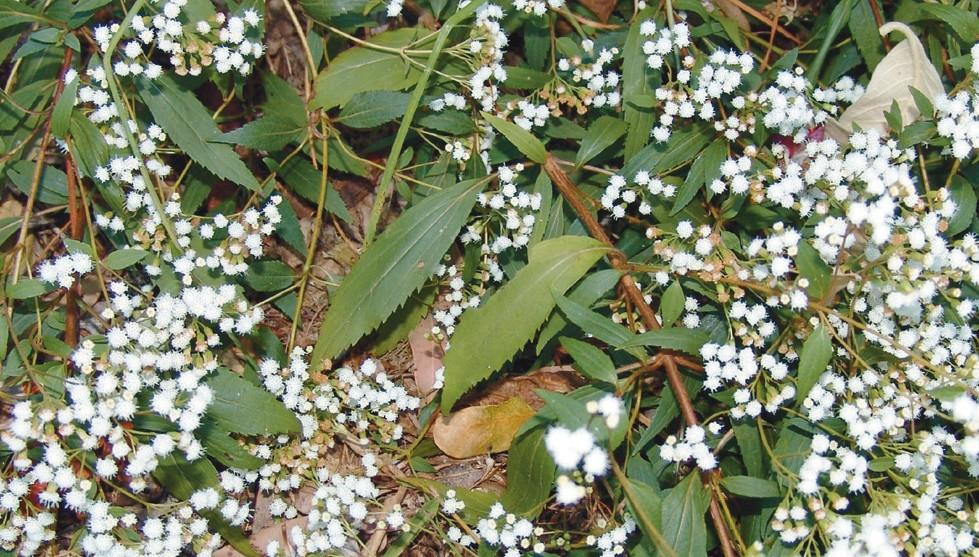
Mistflower
Ageratina riparia
Sprawling, perennial herb to 60cm. Numerous branching stems produce roots at ground level. Leaves opposite, to 8cm long and 2.5cm wide, toothed edges. Flowers white, small dense clusters at ends of branches in winter. Seeds slender, angular, 2mm long, black, fine white hairs at tip. Grows on damp hillsides and creek banks and rapidly invades disturbed areas.

Blue Billygoat Weed
Ageratina houstonianum
Herbaceous plant to 50cm, distinct clusters of small blue-purple flowers most of the year. Leaves serrated, leaves and stems covered in short hairs. Common weed in disturbed areas such as grazing land, roadsides, drainage lines, creeklines and outer edges of bushland.
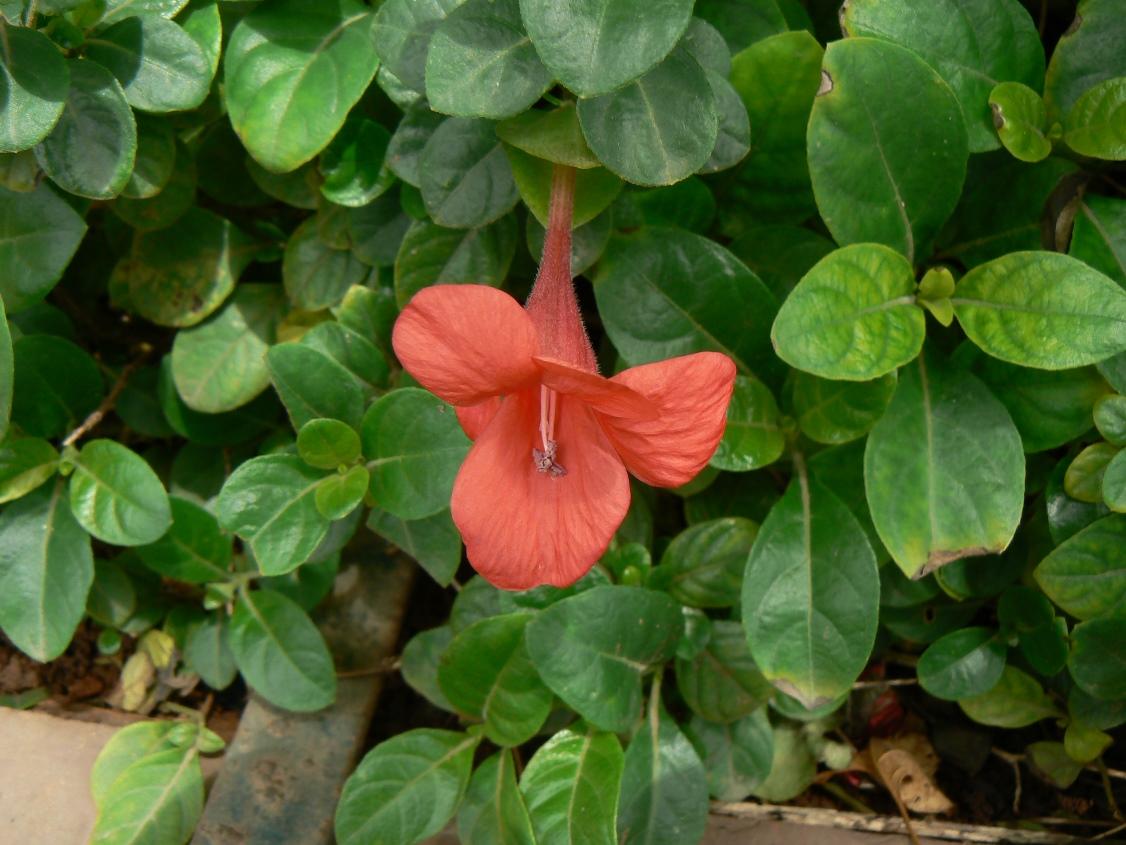
Coral Creeper
Baleria repens
Creeping or scrambling, shrubby plant, usually less than 70cm, bright red tubular flowers. Spreads by seed and vegetatively. Emerging weed in the area, forms dense infestations in bushland understory, will potentially infest waterways.

Cobblers Pegs
Bidens pilosa
Upright herbaceous plant to 1m. Produces lots of seeds, each with two barbs that attach to clothing and fur on contact. Leaves serrated. Small yellow flowering heads. Invades parks, outer edges of bushland, gardens, revegetation sites, grazing land and degraded areas.

Para Grass
Brachiaria mutica
Perennial grass up to 1.5m. Robust, hollow stems, prostrate growth habit sprouting new roots wherever nodes touch ground. End of stems erect. Leaves hairy, dark green, up to 15cm long and 1cm wide, tapering to long, fine point. Leaf sheaths hairy where they join stem. Flower heads to 18cm long, composed of several spikes about 5cm long. Thrives on creek banks and in wetlands.
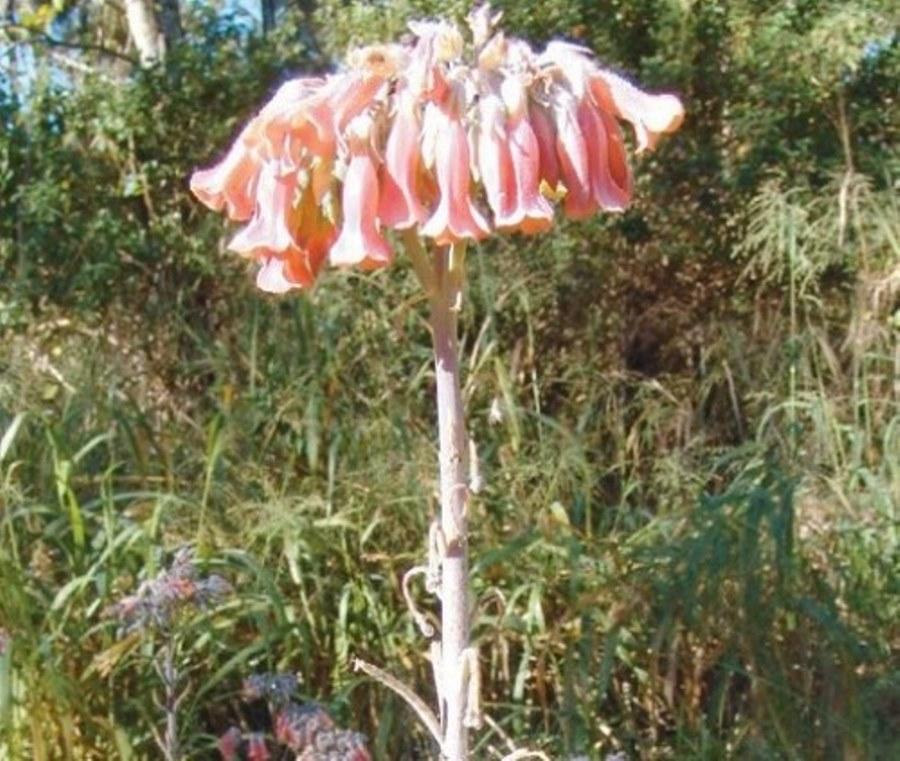
Bryophyllum delagoense
Succulent, perennial herbs with fleshy stems and leaves. Flowers orange, yellow or red, on stalks held above the foliage. Plantlets may form on parent plant or regrowth may occur from tiny leaves or stems on ground. Numerous seeds. Spread by humans and water.

Rhodes Grass
Chloris gayana
Tufted, upright grass growing to 1.5m. Flower head a cluster of 6-18 spikes. Produces masses of seeds, spreads by runners and vegetatively. A pasture grass that has spread to disturbed areas, roadsides and the outer edges of bushland.
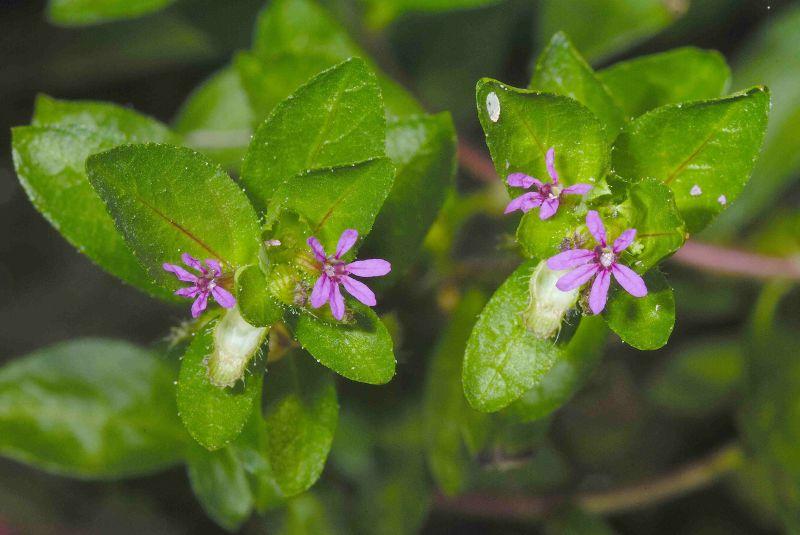
Columbian Waxweed
Cuphea carthagenensis
Upright or spreading herbaceous plant to 45cm. Found in moist and often disturbed sites. Green or reddish stems, covered densely in sticky hairs. Leaves small, 1-6cm long, oval shaped, pointed tips. Flowers grow from leaf forks or tips of branches. Green or reddish tube at base of flower, six pink or purple petals. Spreads from seed only.

Photo: Tony Rodd
African Love Grass
Eragrostis curvula
Tufted grass up to 1.2m, narrow hairless leaves, 25-35cm long and 3mm wide, distinct parallel veins. Seed heads up to 30cm long. Seeds with herringbone feature. Can form dense monocultures. Spread by slashing and transportation of machinery and motor vehicles. Seeds still viable if eaten by livestock. Often found alongside roadsides, railway lines and spreading into pastures.

Polka Dot Plant
Hypoestes phyllostachya
Small, shade-tolerant perennial herb to about 0.5m. Numerous cultivars display different foliage colours and patterns. Typically soft green leaves with white to pink spots or mottled patterns. Small, lavender blue flowers in summer.

Balsam
Impatiens spp.
Annual herb to 60cm. Stems erect, succulent, thick. Leaves ovate, serrated with pointed tip. Brightly coloured flowers in spring, colour between pink, purplish pink, red or rose. Can regrow from stem with node, also spread by seed. Grows in moist, shady areas, particularly invasive along creeks. Spread as dumped garden waste and by water.

Lantana montevidensis
Perennial, sprawling, up to 25cm tall. Thin wiry stems. Leaves in opposite pairs, dark green, 2–3cm long, oval with finely- serrated margins, strong-smelling when crushed. Flowers small, purple with yellow or white centre in symmetrical clusters. Small purplish to black berries in autumn. Often spread by dumping of garden waste or seed, can invade understorey of open forest and woodland, surviving on dry ridge tops and slopes with shallow, stony soils.

Guinea Grass
Megathyrsus maximus
Tall, perennial grass, forms large clumps, up to 1.5m. Leaf blades long, narrow, pointed tips. Seed heads large, branched to 40cm in size. Seeds oblong shaped, purple. Introduced for fodder, common in disturbed areas.
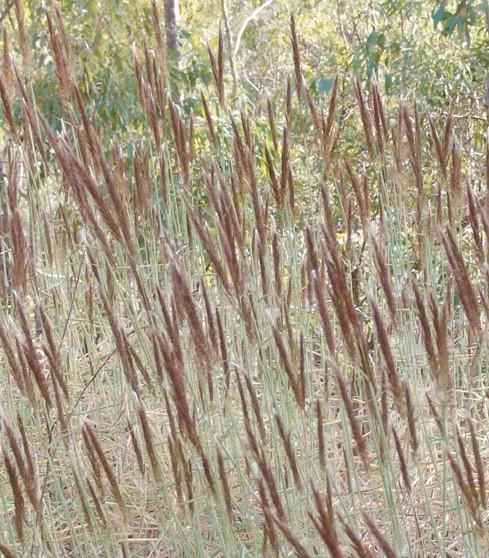
Molasses Grass
Melinis minutiflora
Spreading, densely smothering perennial mat grass. Stems branched, up to 90cm long. Foliage usually sticky, with strong odour resembling molasses. Slender flower heads, in winter, 10–20cm long, purplish in colour when young. Grows thickly from rooted runners. Spreads from disturbed areas adjacent to native forest e.g. roads and tracks. Highly flammable, recovers rapidly from fire, colonises burnt areas at expense of native vegetation.

Red Natal Grass
Melinis repens
Opened tussock grass, upright flower stems, to 1m tall. Young seed heads red, turn pale as they mature. Leaf blades to 30cm long and to 1cm wide, may be folded or flat. Light, fluffy seeds, often wind dispersed or spread by contaminated clothes, vehicles or animals.
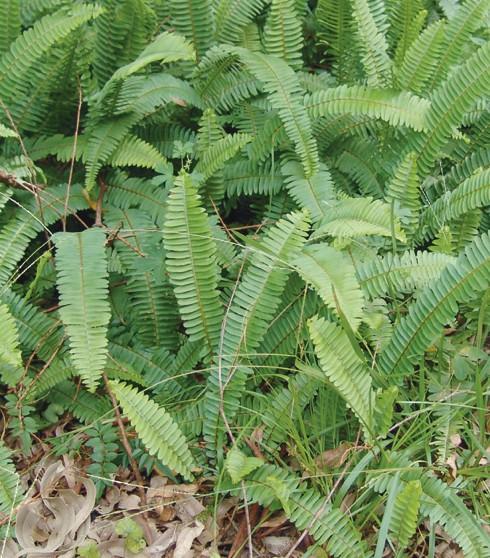
Fishbone Fern
Nephrolepis cordifolia
Wiry, scaly stems branch and spread over ground with fleshy tubers. Can grow densely and expand rapidly to dominate ground surface. Fronds erect or arching to 75cm long. Spread by dumping garden waste and by spores carried by wind or water. NOTE: Where fishbone fern appears to be growing naturally in undisturbed bushland and is not apparently a garden escapee it should not be removed.
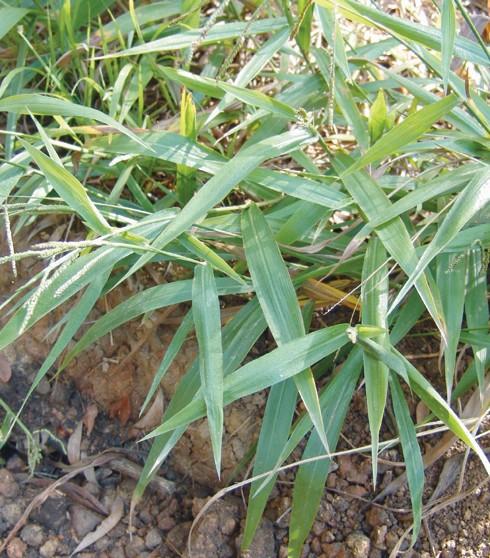
Broad-leafed Paspalum
Paspalum mandiocanum
Tough, clump-forming perennial to 1m, leaves to 15mm wide. Seed head on terminal stalks, up to 10 thin, finger-like spikes carrying many seeds in summer. Spikes grow horizontally outwards from stalk. Seeds sticky, spread by disturbance such as mowing or slashing and via birds. Other paspalum species are also weedy.

Elephant Grass
Pennisetum purpureum and P. purpureum x typhoides
Tufted perennial grasses growing to 4m, resembling sugar cane in appearance. Pale green leaves up to 4cm in width, strong mid-rib tapering to a fine point. Flower heads up to 30cm in length, colour from yellow to purple. Forms bamboo-like, densely tufted clumps on creek banks and roadsides.

Mother-in-law Tongue
Sansevieria trifasciata
Dense, clumping groundcover preferring moist, shady sites. Long, succulent, mottled greenish-yellow leaves to 1m. Often spread by garden dumping, can be difficult to eradicate once established.

Senecio madagascariensis
Annual to biennial herb up to 50cm, branched stems. Mostly found on disturbed farmland. Flowers daisy-like, bright yellow. Seeds white, fluffy, dispersed by wind.
NOTE: Can be poisonous to livestock, particularly cattle and horses.
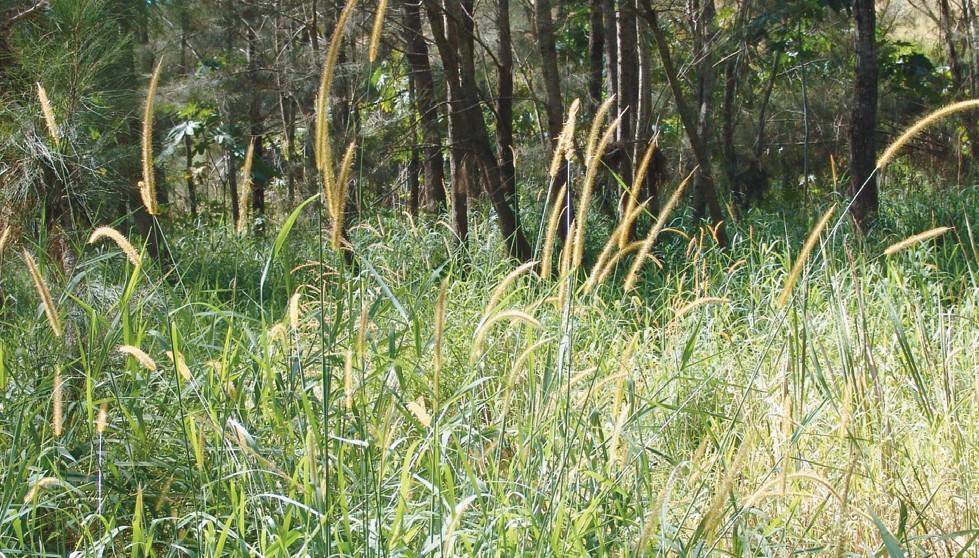
South African Pigeon Grass
Setaria sphacelata
Tufted perennial grass to 1.8m. Commonly found bordering waterways and in damp areas. Inflorescence spike-like up to 25cm long. Leaves bluish-green up to 2cm wide.
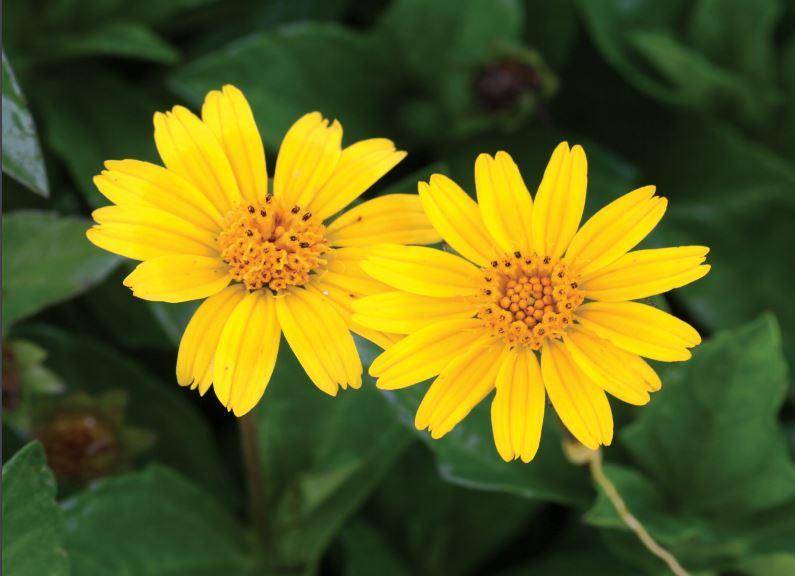
Sphagneticola trilobata
Forms dense mats of runners on ground surface, smothers native plants. Leaves glossy, notched, somewhat fleshy, often lobed. Flowers bright yellow. Able to reproduce by small seeds, more likely to grow from section of stem or root. Spread by humans and water.
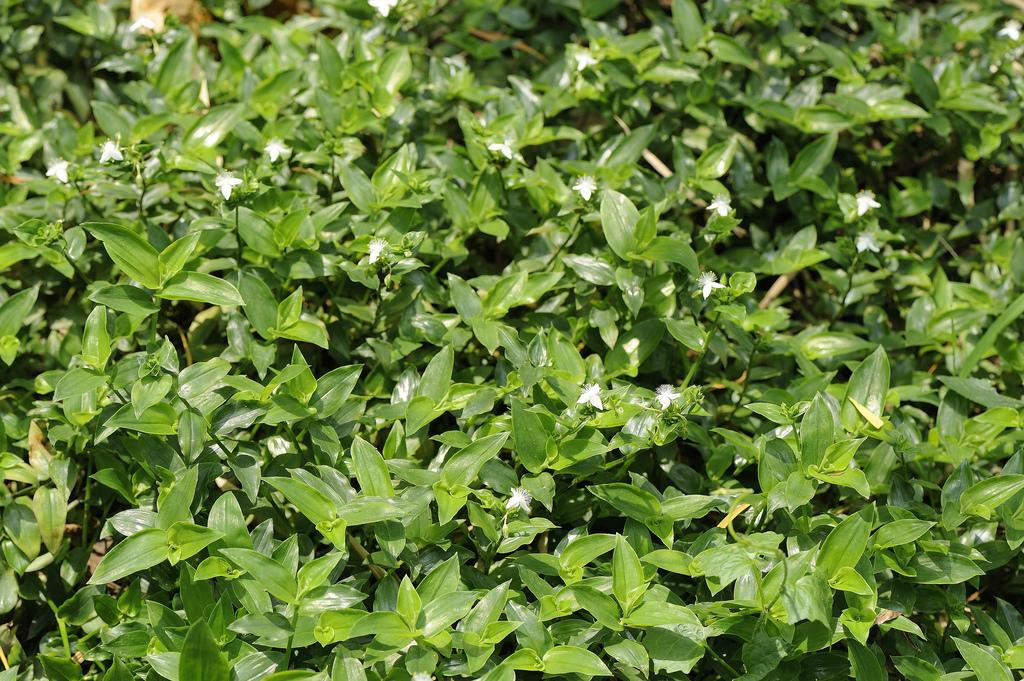
Trad
Tradescantia fluminensis
Ground cover succulent. Dark green, shiny leaves, 5 -10mm long and 1-3cm wide, parallel veins, covered with small hairs. Small white flowers, three petals, yellow tipped stamens. Spreads vegetatively, sends out roots at each nodal point. Can establish itself like a thick carpet in shady moist forest floor.
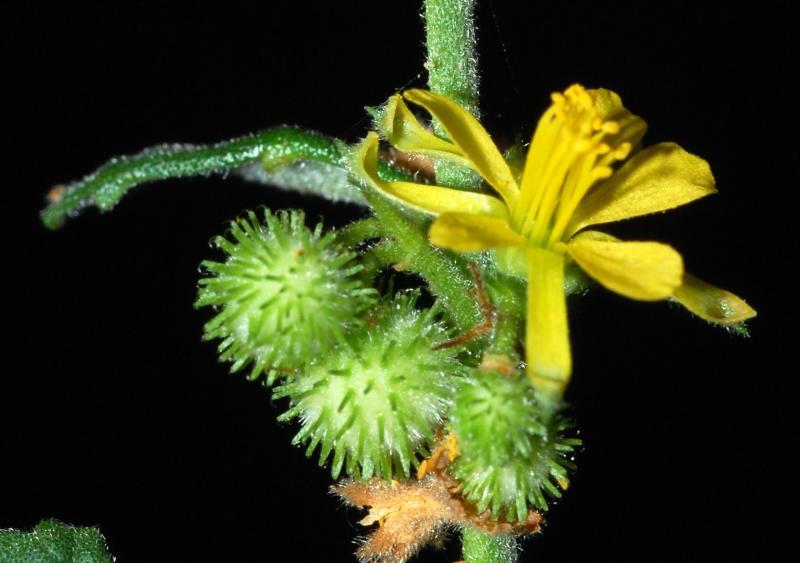
Chinese Burr
Triumfetta rhomboidea
Erect shrub with hairy stems to 1-2m. Leaves rhomboid-ovate shape, to 7cm long and 6 cm wide, strong odour when crushed. Hairs on both sides of leaf, more numerous on lower surface. Small, yellow, umbel-like flowers, often in clusters of three. Capsules with microscopic hook at end, adhere to clothing and animal fur enhancing its distribution.